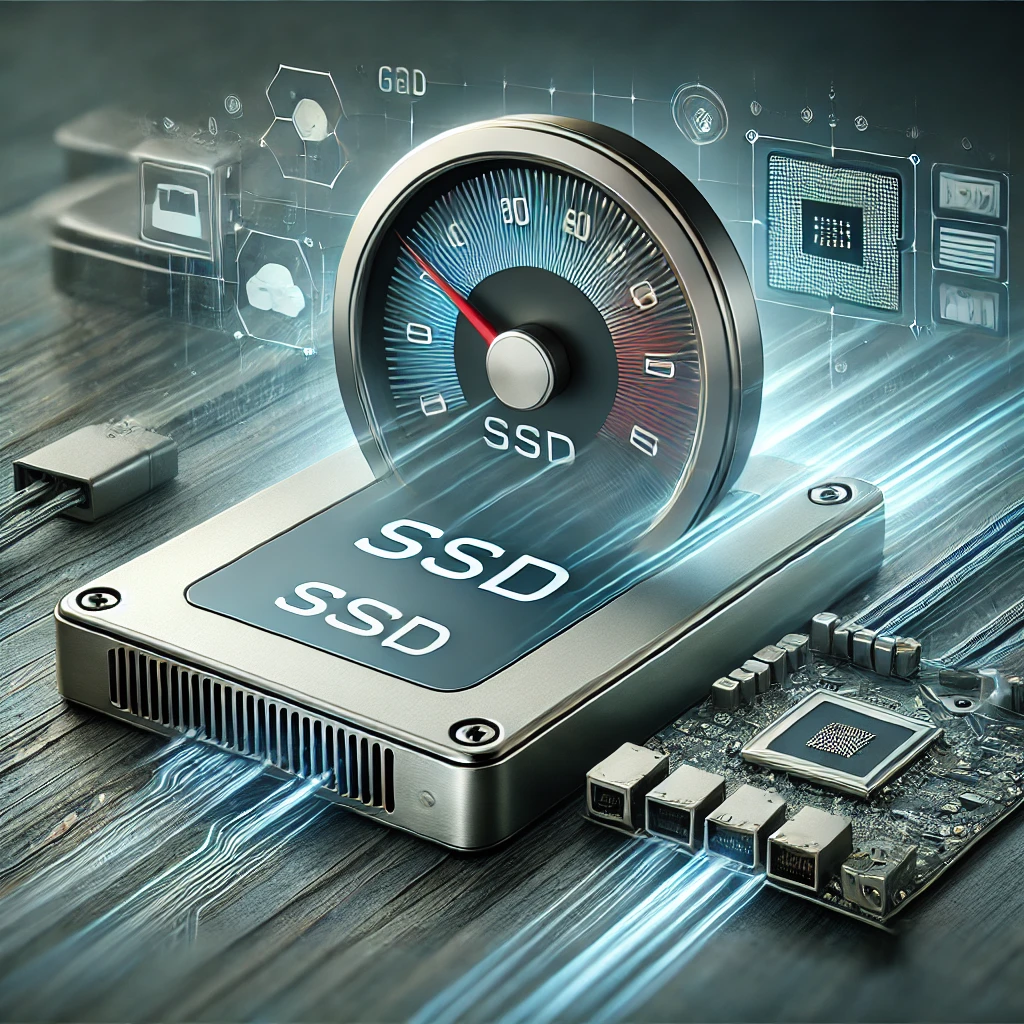When it comes to storage solutions, SSDs have taken the tech world by storm. Their blistering speeds once made them the gold standard for performance enthusiasts and gamers alike. However, as technology evolves, the fixation on SSD speed is starting to shift. You might be wondering if all that speed really matters anymore. With various factors influencing performance and usability, let’s explore four compelling reasons why you shouldn’t sweat over those numbers like you used to. Dive in to discover a broader perspective on what truly counts when choosing your storage solution!
4 Reasons Why SSD Speed Doesn’t Matter Now
While SSD speed was once the primary focus, various factors now play a more significant role in real-world performance. User experience often hinges on how applications are optimized rather than just raw numbers.
Moreover, modern workloads frequently rely on multitasking capabilities and memory management. Fast speeds matter less when your system can efficiently handle tasks without bottlenecks, making SSD speed just one piece of the puzzle in overall performance and usability.
Understanding SSD Speed
SSD speed refers to how quickly data can be read from or written to the drive. This metric plays a crucial role in determining overall system performance, impacting everything from boot times to file transfers.
However, it’s important to recognize that not all users require top-tier speeds for everyday tasks. Many find that even mid-range SSDs meet their needs effectively, making ultra-fast options less critical than they might seem at first glance.
Here’s an easy-to-read table listing popular SSD technologies and their best manufacturers:
| SSD Technology | Best Manufacturers | Key Features |
|---|---|---|
| SATA SSD | Samsung, Crucial, Western Digital | Affordable, reliable, suitable for general use |
| NVMe SSD | Samsung, Western Digital, Kingston, Seagate | High-speed, low latency, ideal for gaming and heavy tasks |
| PCIe SSD | Samsung, Intel, Corsair, Adata | Ultra-fast speeds, directly connects to motherboard |
| M.2 SSD | Samsung, Crucial, Western Digital, Kingston | Compact, versatile, used in laptops and desktops |
| U.2 SSD | Intel, Micron, Seagate | High-capacity, enterprise-grade, used in servers and data centers |
| Optane SSD | Intel | High endurance, ultra-low latency, used for caching and accelerating tasks |
This table provides a clear overview of different SSD technologies, their top manufacturers, and key features to help you make an informed decision.
What does fast actually mean?
When discussing SSD speed, “fast” is often relative. It can refer to how quickly data is read or written from the drive. But it’s essential to remember that not all users need extreme speeds for everyday tasks.
For most people, standard performance suffices for activities like browsing, streaming, and basic file management. The fastest SSDs may shine in gaming or heavy workloads but don’t overlook that a balanced approach can meet your needs without overpaying for unnecessary speed.
How to know how fast your SSD is?
To determine your SSD’s speed, you can use various benchmarking tools. Popular software like CrystalDiskMark or AS SSD Benchmark provides detailed read and write speeds for your drive. These programs run tests that simulate data transfer rates under different conditions.
Another method is to check the specifications listed by the manufacturer. Most brands provide official speed ratings for their drives. Comparing these figures can help you gauge whether your SSD meets your needs or if an upgrade might be necessary for optimal performance.
Comparing SSD vs HDD Speed
When comparing SSD and HDD speed, the difference is striking. Solid State Drives (SSDs) leverage flash memory for significantly faster data transfer rates than traditional Hard Disk Drives (HDDs). This means quicker boot times and reduced load times for applications.
However, many users find that real-world performance often depends on their specific needs. For everyday tasks like browsing or document editing, an HDD might suffice. But for gaming or video editing, the rapid speeds of an SSD can enhance the experience dramatically.
SSD Read/Write Speed
SSD read and write speed refers to how quickly data can be accessed and stored on a solid-state drive. This performance metric is crucial for determining overall system efficiency, especially when multitasking or running demanding applications.
Generally, SSDs outperform traditional hard drives by significant margins. While most SSDs offer read speeds of over 500 MB/s, some high-end models can reach beyond 7,000 MB/s. These numbers indicate swift data retrieval but may not always translate to noticeable improvements in everyday tasks for all users.
HDD Read/Write Speed
HDD read/write speeds typically range from 80 MB/s to 160 MB/s for consumer models. These speeds can vary based on factors like drive RPM and data density. Generally, lower RPM drives perform slower than their higher-speed counterparts.
While HDDs are generally more affordable and offer larger storage capacities, they lag behind SSDs in speed. This difference becomes noticeable during tasks such as booting up a system or transferring large files, where every second counts for efficiency and productivity.
SSD vs. HDD: Lifespan and Reliability
When comparing lifespan and reliability, SSDs generally outperform HDDs. Solid-state drives lack moving parts, making them less susceptible to mechanical failure. This durability often translates to a longer life expectancy under typical usage conditions.
On the other hand, traditional hard disk drives (HDDs) can wear out quicker due to their spinning platters and read/write heads. They’re more prone to physical damage from drops or shocks. While both options have their merits, SSD reliability makes them a popular choice for many users today.
SSD vs. HDD Lifespan
SSD lifespan typically ranges from five to ten years, depending on usage and technology. These drives use flash memory, which can endure a limited number of write cycles. However, advancements in technology are consistently improving their durability.
HDDs generally last longer than SSDs due to fewer restrictions on write cycles. They can often run for up to 15 years with proper care. Yet, mechanical parts in HDDs make them more vulnerable to physical damage over time compared to their solid-state counterparts.
HDD vs. SSD Reliability
When comparing HDD and SSD reliability, it’s essential to consider their construction. HDDs have moving parts, making them susceptible to mechanical failure due to shocks or drops. This can lead to data loss if not handled carefully.
On the other hand, SSDs use flash memory with no moving components. This design allows for greater durability against physical impacts. However, they do have a limited write cycle lifespan, meaning excessive writing over time could wear them out faster than HDDs in specific scenarios.
NVMe vs SSD: Speed, Storage & Mistakes to Avoid
NVMe drives offer significantly faster speeds than traditional SSDs, making them ideal for tasks requiring quick data access. They connect directly to the motherboard via PCIe lanes, drastically reducing latency and improving performance.
However, users often overlook compatibility issues with motherboards or fail to consider their actual storage needs. Buying a high-speed NVMe drive without checking these factors can lead to wasted resources. Understanding your requirements before investing is crucial in maximizing both speed and storage efficiency.
Recent Updates of NVMe
Recent updates to NVMe technology have significantly enhanced performance and efficiency. With the introduction of PCIe 4.0, users can now experience doubled bandwidth compared to its predecessor. This translates into faster data transfer speeds, allowing applications to run smoother and load times to decrease.
Additionally, NVMe over Fabrics (NoF) has gained traction, enabling high-speed access across networks. This means organizations can leverage SSD speed benefits even in cloud environments or data centers without compromising on performance or reliability. The future looks promising for NVMe enthusiasts.
Mistakes to avoid
When navigating the world of SSDs and HDDs, several common pitfalls can lead to poor decisions. Don’t get caught up solely in numbers. Higher SSD speed specs don’t always translate to noticeable improvements in everyday use. Be wary of compatibility issues; ensure your motherboard supports NVMe or specific SSD types before purchasing.
Consider storage needs over speed; a slower drive with more capacity can often serve you better than a rapid but small one. Avoid neglecting regular backups regardless of your choice between SSD and HDD—data loss is an ever-present risk that no speed advantage can mitigate. Remember these tips as you explore options for optimal performance and reliability!




